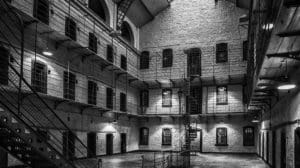Beyond Fur and Feathers: The Profound Significance of Celtic Animals!

Updated On: January 14, 2024 by Esraa Mahmoud
For the ancient Celts, animals weren’t merely creatures to be herded or hunted. They were potent symbols woven into the very fabric of their myths, rituals, and daily lives. From the soaring stag to the slithering serpent, each creature pulsed with a unique energy, representing powerful forces in the natural world and the depths of the human soul.
Celtic animals held deep symbolism and meanings, each representing different traits and qualities in Celtic culture. Animals in Celtic mythology were believed to be messengers from gods and spirits, bringing secrets and messages from the Otherworld. The connection between Celtic animals and nature was an important aspect of their belief system, reminding them to respect and cherish the natural world.
In this blog post, we’ll explore the profound role of animals within Celtic mythology—their potent symbols imbued with distinctive meanings and as links that tether Celts intimately to nature’s heartbeat.
The Role of Celtic Animals in Celtic Mythology
The Celts believed the natural world was interwoven with a spirit realm, the Otherworld, where ancestral spirits resided, and powerful forces held sway. Animals, with their keen senses and agility, were seen as the bridge between these realms. Birds, like the raven and the hawk, could soar between the earth and sky, carrying messages and omens. The stag, with its majestic antlers, was a gatekeeper, guarding the entrance to the Otherworld with its watchful gaze.
Messengers of Gods and Spirits
Celts saw animals as godly postmen; they felt these creatures brought whispers from a world beyond their own. Imagine seeing a hare and thinking it has a secret for you! This was normal in Celtic life.
Even pigs had high standing, connecting humans with gods. To the Celts, every animal held meaning and power. It’s like they spoke a hidden language only the wisest could understand.
Symbolism and Meanings
Animals weren’t just gateways; they were also embodiments of specific traits and powers. The bear, with its fierce strength and maternal instincts, symbolised both protection and warrior prowess. The boar, with its charging tusks and bristling mane, represented fertility and courage. The salmon, leaping over waterfalls with unwavering determination, embodied perseverance and wisdom. Each creature, bearing its unique symbol, became a totem, a source of inspiration and guidance for Celtic warriors and individuals alike.
Celtic animals hold an important place in understanding their culture’s belief system. Animal totems have deep significance in Celtic spirituality as well. These Celtic animals were not just symbolic; they were seen as divine entities that embodied certain qualities or traits coveted by humans.
The significance of Celtic animal symbols transcends mere intellectual understanding. It’s about forging a connection with the natural world and recognising the inherent value and wisdom of every creature. It’s about respecting the delicate balance between humanity and the animal kingdom, remembering that we are all part of the same interconnected web of life.
Guides on the Path of Transformation
Celtic myths are filled with tales of humans shape-shifting into animals and vice versa. This wasn’t simply a fantastical trope; it reflected a deep belief in the interconnectedness of all living beings. The wolf, with its cunning and pack mentality, represented the wild within us, the primal instinct we could tap into.
The serpent, shedding its skin and evolving anew, symbolised transformation and reawakening. By understanding the qualities of these animals, the Celts believed they could unlock their own potential for change and growth.
Important Celtic Animals and Their Meanings!

Celtic mythology, unlike a static museum exhibit, vibrates with the energy of the natural world. Among its many wonders, Celtic animals hold a special place, their forms imbued with deep significance and whispers of ancient wisdom. Let’s delve into the meanings of some of the most important Celtic animals’ symbols:
Celtic Bull
The Celtic Bull holds great significance in Celtic mythology. In Celtic symbolism, bulls represent strength and virility. They are seen as powerful animals and often associated with gods like Tarvos Trigaranus, who is depicted as a bull with three cranes on his back.
The bull’s muscular physique and charging horns made it a natural symbol of masculine power, courage, and warrior prowess. Celtic gods like Tarvos Trigaranus and Donn were often depicted with bulls, reflecting their strength and dominion over the natural world.
The bull’s role in procreation and its association with rich pastures made it a symbol of fertility, abundance, and agricultural prosperity. It was often featured in rituals and myths related to land, crops, and the cycle of life and death.
The bull’s connection to the ground, its powerful hooves churning the earth, and its horns resembling crescent moons associated it with the Earth goddess and the Underworld. In some Celtic traditions, the bull was seen as a psychopomp, a guide for souls transitioning between the worlds.
The sacrifice of bulls played a significant role in Celtic rituals, often associated with offerings to deities or appeasing them. This sacrifice, however, wasn’t seen as merely destructive; it symbolised the death and rebirth of life, the return of nutrients to the earth, and the promise of renewal.
Celtic Cat
In Celtic mythology, the Cat embodies a fascinating duality, a revered and feared creature possessing a potent mix of magic, independence, and mystery.
The Celts saw cats as guardians of the Otherworld, able to see beyond what humans could perceive. They were considered protectors against evil spirits and bad luck.
Celtic Cat was also linked to fertility and femininity. The Celts admired the Cat’s graceful movements, making them symbols of elegance and sensuality. Additionally, cats were connected to the moon due to their nocturnal nature, further enhancing their mysterious aura.
As skilled hunters, cats were associated with prowess, agility, and cunning. They symbolised protection, both of the home and of individuals, often seen as defenders against evil spirits and misfortune. Their ability to navigate shadowy spaces further strengthened their role as wardens against darkness.
In Celtic folklore, it was believed that cats had connections with witches or druids who could transform into feline forms. This association added an element of wisdom and intuition to the Cat’s symbolism in Celtic mythology.
Celtic Wolfhound (Dog)
The Celtic Wolfhound, or dog, was significant in Celtic mythology. They were considered sacred and had a close connection to the spiritual realm. These majestic creatures were believed to possess wisdom and cunning, making them highly respected by the Celts.
Like their modern counterparts, Celtic wolfhounds were fiercely loyal, forming strong bonds with their human partners. They symbolised unwavering devotion, faithfulness in battle, and the enduring nature of friendship. Stories like Cú Chulainn and his hound, Bran, exemplify this, showcasing the deep connection between warriors and their wolfhound companions.
These powerful dogs were renowned for their bravery and prowess. They symbolised fierce protectors, guarding homes, families, and entire communities. Their presence embodied the qualities of a warrior – fearlessness, resilience, and the ability to face any challenge with unwavering courage.
Like cats, Celtic wolfhounds were believed to be able to navigate between the physical world and the Otherworld. Their keen senses and association with hunting made them guardians of sacred spaces, protecting the boundaries between realms and warding off evil spirits.
In some Celtic myths, wolfhounds appear as shapeshifters, blurring the lines between human and animal: this symbolised change, adaptation, and the potential for transformation within individuals and nature. Additionally, the connection to wolves, creatures associated with liminality and transformation, further strengthens this symbolic layer.
Celtic Porpoise (Dolphin)
Unlike horses or wolves, dolphins or porpoises aren’t as extensively documented in Celtic mythology as other Celtic animals. However, we can still glean some interesting symbolic interpretations based on their presence in folklore and cultural practices.
Celtic cultures lived near the sea, and dolphins, with their playful nature and graceful movements, were often viewed as guardians of these vast expanses. They symbolised protection for fishermen and travellers, guiding them through treacherous waters and warding off potential dangers. Additionally, their ability to dive into the depths and reappear effortlessly associated them with the Otherworld, acting as messengers between the earthly realm and the realm of spirits and deities.
Dolphins’ fluid forms and playful behaviour earned them a reputation as shapeshifters and tricksters in some Celtic legends. This association with transformation and devilish cunning resonated with themes of magic and the unpredictable nature of the sea. Stories about these aquatic tricksters might have served as cautionary tales or added a touch of whimsy to their maritime lore. It’s important to note that interpretations of the dolphin’s symbolism in Celtic cultures could vary depending on specific regions and traditions.
Celtic Goose
Celtic Goose is one of the essential Celtic animals in the Celtic mythology. The Goose’s fierce nature, especially during mating season, and its association with warriors like Nuada Silverarm linked it to bravery, aggression, and the fiery spirit of battle. Honking goose flocks were seen as omens of approaching conflict, and warriors might wear goose feathers or motifs as symbols of their courage and strength.
Similar to swans, geese were regarded as protectors, often associated with goddesses like Brigid and Rhiannon. They symbolised vigilance, guardianship of sacred spaces, and even communication with the Otherworld. Their mighty wings and ability to fly high made them messengers between the realms, carrying prayers and offerings to the deities.
Celtic myths like the “Legend of the Wild Goose” connect the Goose with transformation and rebirth. Honking geese returning in spring signified renewal and the cyclical nature of life and death. Additionally, some scholars connect the Goose’s ability to shed water from its feathers to the theme of purification and rebirth.
Like other Celtic farm animals, geese were associated with agricultural wealth and abundance. Their presence in rituals and artwork could represent fruitful harvests, plentiful flocks, and prosperity for the community. This symbolism likely stemmed from their practical value as a source of food and feathers.
Celtic Griffin
The Celtic Griffin is a mythical creature with the body of a lion and the head and wings of an eagle. It was believed to be a powerful guardian that protected treasures and valuable possessions.
Combining the king of birds and the king of beasts, the griffin embodies unparalleled strength, courage, and ferocity. It represents a formidable protector, capable of defending against any threat and overcoming the most daunting challenges. This association made the griffin a popular motif in warrior stories and artistic representations of heroes.
The griffin’s dual nature, uniting the aerial and terrestrial realms, symbolises balance and harmony. It signifies the importance of integrating seemingly opposing forces, such as strength and cunning, instinct and intellect. This balance also relates to the Celtic concept of the Otherworld, where physical reality intersects with the spiritual realm.
Due to its regal bearing and potent symbolism, the griffin represents nobility, leadership, and wisdom. It was often associated with kings, deities, and figures of authority, reflecting their power and responsibility to maintain order and protect their people.
In conclusion, the significance of Celtic animals in mythology is vast and fascinating. These Celtic animals served as messengers from the gods and spirits, embodying symbolism and meanings that were deeply connected to nature and the sacred land. Understanding the importance of Celtic animals sheds light on their rich folklore and spirituality.






